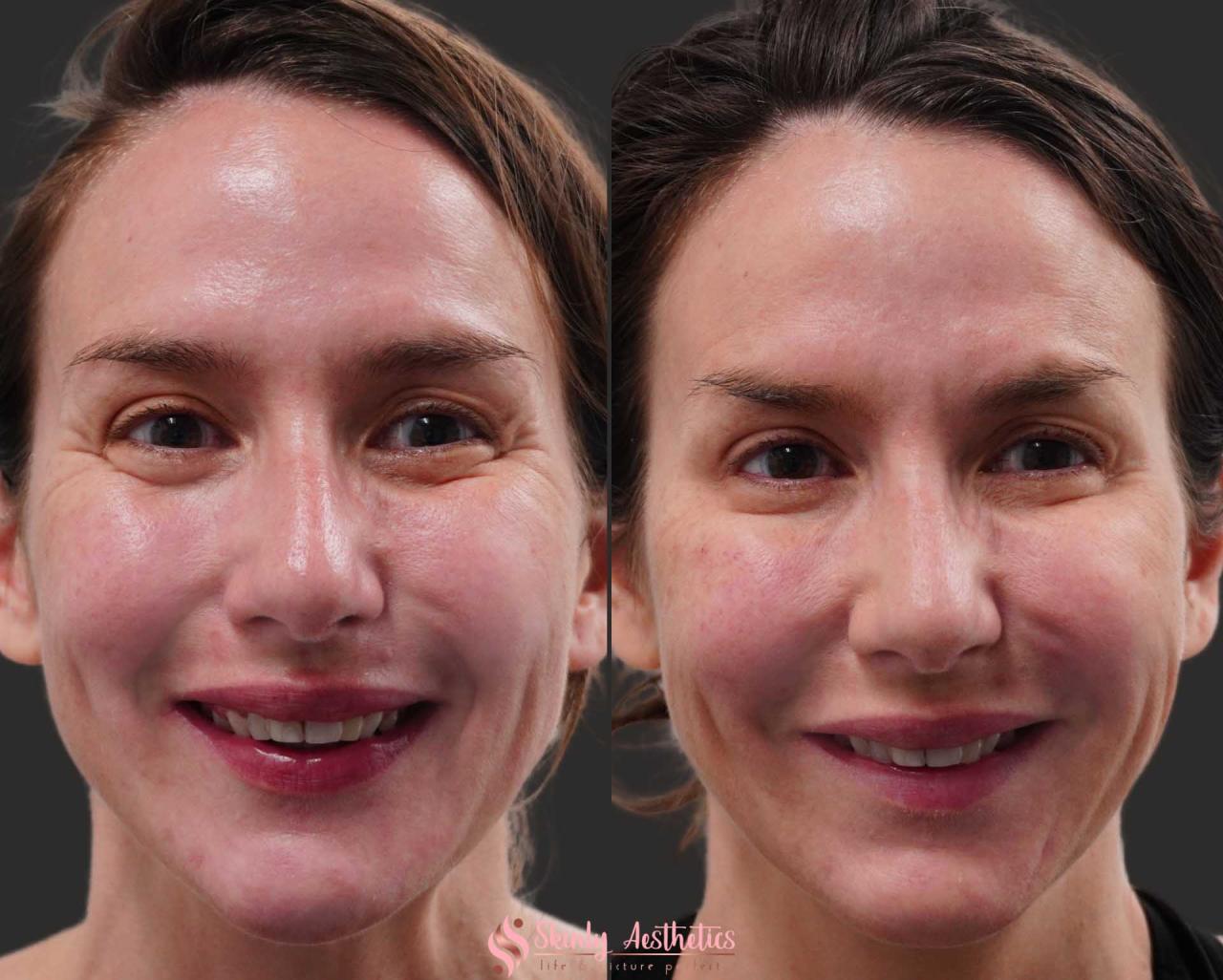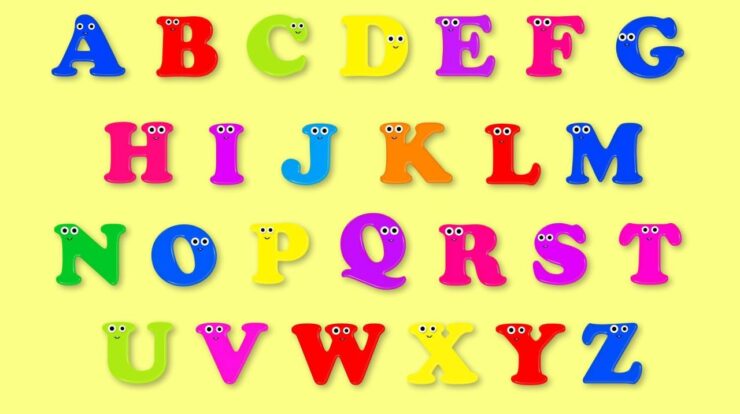Crows feet before and after botox, get ready to uncover the secrets to achieving a more youthful and vibrant look around your eyes. Brace yourself for an enlightening journey into the world of wrinkle reduction and discover how Botox can work wonders for those pesky crow’s feet.
In this comprehensive guide, we’ll delve into the fascinating process of Botox treatment, exploring its mechanism of action and the targeted muscles involved. We’ll also provide a glimpse into the entire procedure, from the initial consultation to the injection process.
Additionally, we’ll discuss the expected results after Botox treatment and shed light on the importance of maintaining realistic expectations.
Introduction to Crow’s Feet and Botox
Crow’s feet, also known as laugh lines or character lines, are the fine lines and wrinkles that appear around the outer corners of the eyes. They are called crow’s feet because they resemble the footprints left by a crow.
Many people consider crow’s feet to be a common concern because they can make a person appear older and tired. These wrinkles are often associated with the natural aging process and can be caused by factors such as repetitive facial expressions, sun exposure, and loss of skin elasticity.
Botox, a brand name for botulinum toxin type A, is a popular treatment option for crow’s feet. It is an injectable neurotoxin that temporarily reduces muscle activity in the treated area. Botox works by blocking the release of acetylcholine, a neurotransmitter responsible for muscle contractions.
When Botox is injected into the muscles around the eyes, it relaxes the muscles and smoothens the appearance of crow’s feet. The treatment is quick, relatively painless, and requires no downtime. The effects of Botox typically last for three to four months, after which further injections may be needed to maintain the results.
How Botox is used to treat crow’s feet
Botox is administered through a series of small injections directly into the muscles around the eyes. The injection sites are carefully chosen by a trained medical professional to ensure precise targeting of the muscles responsible for crow’s feet.
After the injections, it takes a few days for the Botox to take effect. Patients will gradually notice a reduction in the appearance of their crow’s feet as the muscles relax. The full results of the treatment are usually visible within one to two weeks.
It’s important to note that Botox is a temporary solution for crow’s feet. Over time, the effects of Botox wear off, and the muscles regain their activity, causing the wrinkles to reappear. Regular maintenance treatments are necessary to sustain the desired results.
Botox is generally considered safe when administered by a qualified professional. However, like any medical procedure, it carries some risks and potential side effects. It’s essential to consult with a healthcare provider to assess your suitability for Botox and discuss any concerns or questions you may have.
How Does Botox Work?
Botox, also known as Botulinum toxin, is a neurotoxic protein produced by the bacterium Clostridium botulinum. It is widely used in cosmetic procedures to reduce the appearance of wrinkles, including crow’s feet. Botox works by temporarily paralyzing the muscles that cause wrinkles.
It does this by blocking the signals between the nerves and the muscles, preventing the muscles from contracting. This temporary paralysis of the muscles helps smooth out the skin and reduce the appearance of crow’s feet.
Muscles Targeted for Crow’s Feet Treatment
To effectively treat crow’s feet, Botox targets specific muscles around the eyes that are responsible for the formation of wrinkles in that area. The main muscles targeted include:
- Orbicularis oculi muscle: This muscle encircles the eye and is responsible for closing the eyelids. Over time, repeated contractions of this muscle can lead to the formation of crow’s feet.
- Corrugator supercilii muscle: This muscle is located between the eyebrows and is responsible for causing vertical lines known as frown lines or “11” lines. Relaxing this muscle can also help reduce the appearance of crow’s feet.
By injecting Botox into these specific muscles, the nerve signals are blocked, preventing them from contracting and causing wrinkles. This results in a smoother and more youthful appearance around the eyes.It is important to note that Botox treatment for crow’s feet should be performed by a trained medical professional to ensure safety and optimal results.
The Process of Getting Botox for Crow’s Feet
Getting Botox for crow’s feet involves a step-by-step process that begins with a consultation with a healthcare professional. This is followed by preparation steps before the procedure and the actual injection process. Let’s take a closer look at each of these steps.
Consultation with a Healthcare Professional
Before undergoing any cosmetic procedure, it is important to have a consultation with a qualified healthcare professional. During this consultation, the healthcare professional will evaluate your suitability for Botox treatment and discuss your expectations and desired outcomes. They will also assess your medical history, allergies, and any medications you are currently taking to ensure there are no contraindications or potential risks.
Preparation Steps before the Botox Procedure
Once you have decided to proceed with Botox treatment for your crow’s feet, there are a few preparation steps that need to be taken. These may include avoiding certain medications or supplements that can increase the risk of bleeding, such as aspirin or ibuprofen.
It is also advisable to stop using any skincare products that contain retinol or glycolic acid a few days prior to the procedure. Additionally, you may be advised to cleanse your face thoroughly before the treatment to ensure the area is clean and free from any makeup or skincare products.
Injection Process and What to Expect
During the actual Botox treatment, the healthcare professional will first mark the areas where the injections will be administered. They will then use a fine needle to inject small amounts of Botox into the muscles around your crow’s feet. The injections themselves are relatively quick and typically cause minimal discomfort.
Some individuals may experience a slight stinging or pinching sensation, but any discomfort is usually brief and tolerable.
After the injections are complete, you may be given ice packs to help reduce any swelling or bruising that may occur. It is important to follow any post-procedure instructions provided by your healthcare professional, which may include avoiding strenuous activities, excessive heat exposure, or massaging the treated area for a specified period of time.
It is important to note that the full effects of Botox may take a few days to become noticeable, and the results typically last for several months. It is recommended to schedule follow-up appointments as advised by your healthcare professional to maintain the desired results.
Remember, the process of getting Botox for crow’s feet should always be performed by a qualified healthcare professional to ensure your safety and achieve the best possible outcomes.
Before and After Botox Treatment
Before undergoing Botox treatment for crow’s feet, it is important to understand the current appearance of these wrinkles and the expected improvements after the treatment.
Crow’s feet, also known as laugh lines or character lines, are the fine lines that appear around the outer corners of the eyes. They are caused by repetitive facial movements such as smiling, squinting, or frowning. Over time, these lines become more pronounced and can make a person appear older.
Before Botox treatment, crow’s feet may be visible at rest or become more prominent when the individual squints or smiles. These lines can vary in depth and severity among individuals, depending on factors such as genetics, lifestyle, and sun exposure.
The Expected Results and Improvements
Botox, a neurotoxin derived from the bacterium Clostridium botulinum, is commonly used to temporarily reduce the appearance of crow’s feet. When injected into the muscles responsible for the formation of these wrinkles, Botox works by blocking the nerve signals that cause muscle contractions.
The effects of Botox treatment typically start to become noticeable within a few days, with the full results appearing within two weeks. After the treatment, the muscles around the eyes relax, smoothening out the crow’s feet and reducing their visibility.
The improvements seen after Botox treatment may include:
- Reduced depth and severity of crow’s feet wrinkles
- Softer and smoother skin around the eyes
- A more refreshed and youthful appearance
It is important to note that the results of Botox treatment are not permanent. The effects typically last for three to four months, after which the muscle activity gradually returns, and the crow’s feet may reappear. However, with continued treatments, the results can be maintained for longer periods.
The Importance of Realistic Expectations
While Botox can provide significant improvements in the appearance of crow’s feet, it is crucial to have realistic expectations. Botox is not a complete solution for eliminating all signs of aging or achieving perfectly smooth skin.
Individual results may vary, and factors such as skin quality, lifestyle, and overall health can influence the outcome of the treatment. It is important to consult with a qualified medical professional who can assess your specific situation and provide personalized advice.
Additionally, it is worth noting that Botox treatment for crow’s feet does not address other concerns such as under-eye bags or dark circles. These may require alternative treatments or a combination of procedures to achieve the desired results.
Potential Risks and Side Effects
Botox for crow’s feet is generally considered safe and effective when administered by a qualified healthcare professional. However, like any medical procedure, there are potential risks and side effects that should be taken into consideration.
Possible Risks
- Allergic reactions: Some individuals may have an allergic reaction to Botox, which can cause symptoms such as itching, rash, or difficulty breathing. It is important to inform your healthcare provider if you have any known allergies.
- Injection site reactions: Common side effects of Botox injections include redness, swelling, bruising, or pain at the injection site. These reactions are usually mild and temporary.
- Spread of toxin: In rare cases, the effects of Botox can spread beyond the injection site and cause muscle weakness, drooping eyelids, or difficulty swallowing or speaking. This can occur if the Botox is injected too close to other muscles or if it migrates to unintended areas.
- Temporary muscle weakness: Botox works by temporarily relaxing the muscles that cause crow’s feet. However, in some cases, this relaxation can extend to nearby muscles, causing temporary weakness or drooping.
Choosing a Qualified Healthcare Professional
It is crucial to select a qualified healthcare professional, such as a board-certified dermatologist or plastic surgeon, to perform Botox injections for crow’s feet. These professionals have the necessary training and experience to administer Botox safely and effectively.
When choosing a healthcare professional, consider the following:
- Check their credentials and certifications.
- Read reviews and testimonials from previous patients.
- Ask about their experience specifically with Botox injections for crow’s feet.
- Inquire about the sterilization and safety protocols followed in their practice.
Tips for Minimizing Risks and Maximizing Safety
- Be honest and transparent with your healthcare professional about your medical history, including any allergies, previous procedures, or current medications.
- Follow all pre- and post-treatment instructions provided by your healthcare professional.
- Avoid rubbing or massaging the treated area immediately after the procedure to prevent the spread of Botox to unintended muscles.
- Avoid strenuous activities, saunas, and hot baths for at least 24 hours after the treatment to minimize the risk of complications.
- If you experience any concerning symptoms or side effects after the procedure, contact your healthcare professional immediately.
Alternative Treatments for Crow’s Feet

Crow’s feet, also known as laugh lines or character lines, are the fine lines and wrinkles that appear at the outer corners of the eyes. While Botox is a popular and effective treatment for crow’s feet, there are also alternative non-invasive treatments available.
These alternative treatments include topical creams and serums, as well as other cosmetic procedures such as fillers or laser treatments.
Topical Creams and Serums
One alternative treatment for crow’s feet is the use of topical creams and serums. These products are applied directly to the skin and contain ingredients that help to moisturize and hydrate the skin, as well as reduce the appearance of wrinkles.
Some common ingredients found in these creams and serums include retinol, peptides, hyaluronic acid, and antioxidants.Pros:
- Non-invasive and easy to use at home.
- Can provide temporary improvement in the appearance of crow’s feet.
- May help to improve the overall texture and appearance of the skin.
Cons:
- Results may vary and can take time to see noticeable improvement.
- The effects are temporary and will require ongoing use of the products.
- May not provide the same level of results as Botox or other cosmetic procedures.
Fillers
Another alternative treatment option for crow’s feet is the use of fillers. Fillers are injectable substances that can help to plump up the skin and fill in wrinkles and lines. Common fillers used for crow’s feet include hyaluronic acid and collagen.Pros:
- Can provide immediate results in reducing the appearance of crow’s feet.
- Results can last for several months.
- Can also be used to treat other areas of the face, providing an overall rejuvenating effect.
Cons:
- Requires injection by a trained professional.
- Potential side effects include bruising, swelling, or allergic reactions.
- Results are temporary and will require ongoing treatments to maintain the effects.
Laser Treatments
Laser treatments are another alternative for treating crow’s feet. These treatments use laser technology to stimulate collagen production in the skin, which can help to reduce the appearance of wrinkles and lines.Pros:
- Can provide long-lasting results.
- Non-invasive and typically require minimal downtime.
- Can also help to improve the overall texture and tone of the skin.
Cons:
- Multiple treatments may be needed to achieve desired results.
- Potential side effects include redness, swelling, or temporary changes in skin pigmentation.
- The cost of laser treatments can be higher compared to other alternative treatments.
It’s important to consult with a qualified dermatologist or cosmetic surgeon to determine the most suitable alternative treatment option for your specific needs and goals. They will be able to assess your individual situation and provide personalized recommendations based on your skin type, severity of crow’s feet, and desired outcomes.
Maintaining Results and Long-Term Care: Crows Feet Before And After Botox
After receiving Botox treatment for crow’s feet, it is important to take certain steps to maintain the results and ensure long-term care. By following a comprehensive skincare routine and getting regular Botox injections, you can prolong the effects of the treatment and keep your skin looking youthful and refreshed.
Tips for Maintaining Results, Crows feet before and after botox
To maintain the results of your Botox treatment for crow’s feet, consider the following tips:
- Protect your skin from the sun: Sun exposure can accelerate the aging process and cause wrinkles to appear more prominent. Always wear sunscreen with a high SPF, and use protective clothing and accessories, such as hats and sunglasses, when spending time outdoors.
- Stay hydrated: Drinking an adequate amount of water can help keep your skin hydrated and plump, reducing the appearance of wrinkles. Aim to drink at least 8 glasses of water per day.
- Adopt a healthy lifestyle: Maintaining a balanced diet, exercising regularly, and getting enough sleep can contribute to overall skin health. These lifestyle factors can help support the effects of Botox and keep your skin looking its best.
- Use moisturizers and serums: Incorporate moisturizers and serums into your skincare routine to keep your skin hydrated and nourished. Look for products that contain ingredients like hyaluronic acid and retinol, which can help improve the appearance of wrinkles.
- Avoid smoking and excessive alcohol consumption: Smoking and excessive alcohol consumption can have detrimental effects on your skin’s health and accelerate the aging process. Quitting smoking and limiting alcohol intake can help maintain the results of your Botox treatment.
Recommended Frequency of Botox Injections
The frequency of Botox injections for long-term care may vary depending on individual factors and the recommendations of your healthcare provider. In general, Botox injections for crow’s feet are typically repeated every 3 to 4 months to maintain the desired results.
However, it is important to consult with your healthcare provider to determine the most suitable schedule for your specific needs.
Complementary Skincare Routine
In addition to Botox treatment, a comprehensive skincare routine can help enhance the results and promote healthy skin. Consider the following suggestions for a complementary skincare routine:
- Cleansing: Cleanse your face twice a day using a gentle cleanser to remove dirt, oil, and impurities.
- Toning: Use a toner to balance the pH levels of your skin and minimize the appearance of pores.
- Moisturizing: Apply a moisturizer suitable for your skin type to keep your skin hydrated and supple.
- Exfoliating: Incorporate exfoliation into your routine to remove dead skin cells and promote cell turnover.
- Eye cream: Use an eye cream specifically formulated to target fine lines and wrinkles around the eyes.
- Antioxidant serum: Consider using an antioxidant serum to protect your skin from free radicals and environmental damage.
Remember to consult with your healthcare provider or dermatologist for personalized recommendations and guidance on maintaining the results of your Botox treatment for crow’s feet. By combining proper skincare practices with regular Botox injections, you can enjoy long-lasting results and keep your skin looking youthful and rejuvenated.
Summary

As you bid farewell to this informative discussion, remember that Botox treatment offers a temporary solution to crow’s feet. Keep in mind the potential risks and side effects, and always choose a qualified healthcare professional for the procedure. Should you consider alternative treatments, we’ll explore non-invasive options and compare them with Botox, weighing their pros and cons.
To ensure long-term care, we’ll provide valuable tips for maintaining the results and suggest a comprehensive skincare routine to complement your Botox treatment.
FAQ Summary
What are crow’s feet?
Crow’s feet are the fine lines and wrinkles that appear around the outer corners of the eyes, typically associated with aging and repeated facial expressions.
How does Botox reduce the appearance of crow’s feet?
Botox works by temporarily paralyzing the muscles responsible for causing wrinkles, including those that contribute to crow’s feet. By relaxing these muscles, Botox smooths out the skin and diminishes the visibility of crow’s feet.
What happens during a Botox consultation?
During a Botox consultation, a healthcare professional will assess your concerns, discuss your medical history, and determine if you are a suitable candidate for the procedure. They will also explain the potential risks and benefits and address any questions or doubts you may have.
How long do the results of Botox treatment last for crow’s feet?
The results of Botox treatment for crow’s feet are not permanent and typically last for about 3-6 months. However, individual experiences may vary. It is important to follow up with regular treatments to maintain the desired results.
Are there any alternative treatments for crow’s feet?
Yes, there are alternative treatments for crow’s feet, such as topical creams and serums that can help reduce the appearance of wrinkles. Additionally, other cosmetic procedures like fillers or laser treatments may be considered. It is advisable to consult with a healthcare professional to determine the most suitable option for you.


